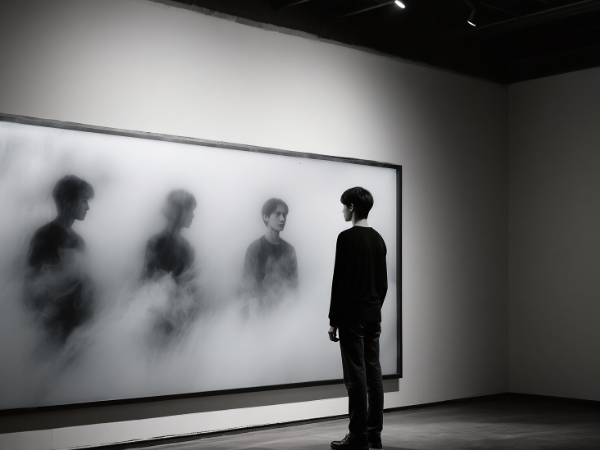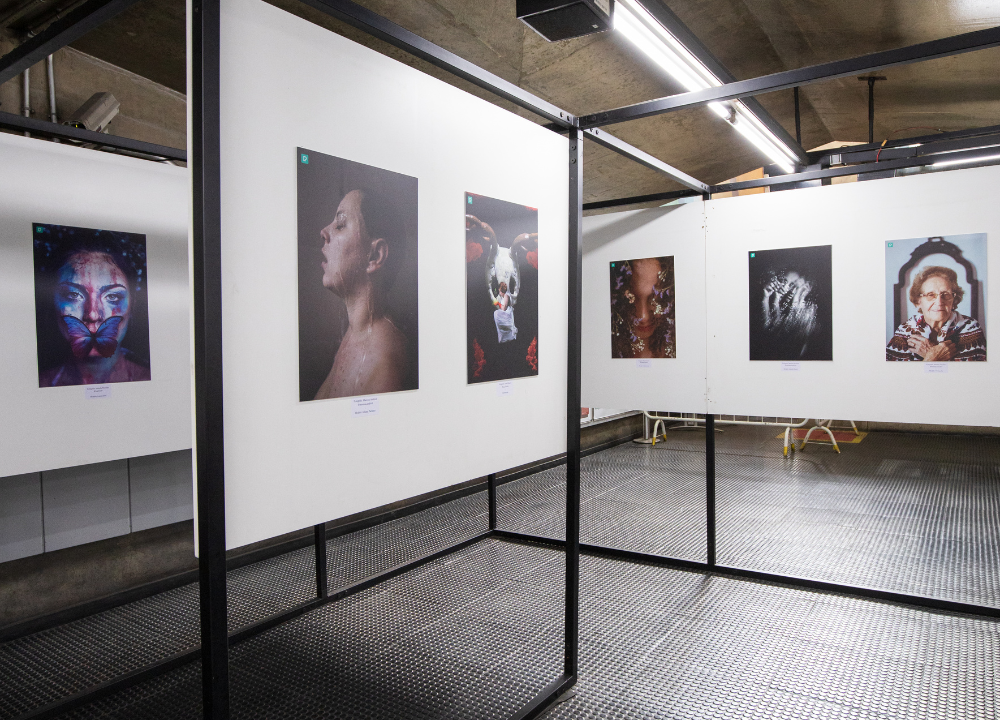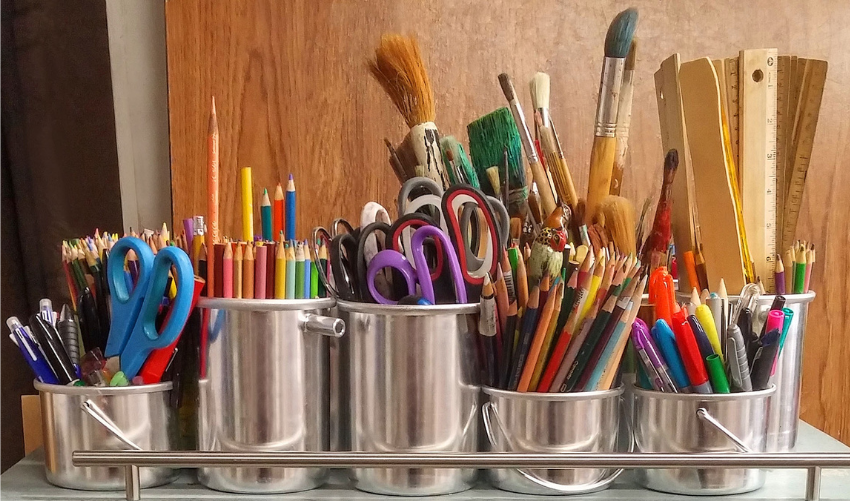Are you thinking about starting your own art collection? The world of art can be thrilling, yet it can also feel overwhelming.
With so many styles, artists, and price points, where do you even begin? This Art Buying Guide is here to help you navigate the process with ease. Imagine walking into your home and seeing pieces that resonate with your personality and taste.
Choosing Your Style
Art buying can be exciting and overwhelming for new collectors. Choosing the right style is crucial. Your style reflects your taste and personality. It can shape your collection. Let’s explore some tips on how to find your unique style.
Understand Your Personal Taste
Start by thinking about what you love. Ask yourself these questions:
- What colors attract me?
- What themes resonate with me?
- Do I prefer modern or traditional styles?
Write down your answers. This will help you see patterns in your preferences. Look at art pieces online or in galleries. Note what catches your eye.
Explore Different Art Styles
Familiarize yourself with various art styles. Here are some popular options:
| Art Style | Description |
|---|---|
| Abstract | Focuses on shapes and colors rather than real-life images. |
| Realism | Portrays subjects as they appear in real life. |
| Impressionism | Captures light and movement with loose brush strokes. |
| Modern | Includes a variety of styles that reflect contemporary life. |
| Pop Art | Draws inspiration from popular culture and mass media. |
Visit Galleries And Art Fairs
Experience art in person. Visit local galleries and art fairs. Observe how different styles make you feel. Talk to gallery owners and artists. They can offer insights into their work. This interaction can spark inspiration.
Consider Your Space
Your home is a canvas. Think about where you will display the art. Consider the following:
- Room size
- Wall color
- Existing decor
Choose art that complements your space. Balance your collection with different sizes and styles. This creates harmony in your home.
Trust Your Instincts
Ultimately, trust your feelings. Choose pieces that speak to you. Your collection should make you happy. Follow your instincts over trends. Art is personal, and your style should reflect who you are.

Setting A Budget
Buying art can be exciting, especially for new collectors. Setting a budget is an important first step. It helps you focus on what you can afford. This guide offers tips on how to create a smart budget for your art collection.
Understanding Your Financial Limits
Before buying art, know your financial limits. Consider these points:
- Monthly expenses
- Savings goals
- Other financial commitments
Take time to review your finances. This will help you decide how much to spend on art.
Deciding On A Price Range
Once you know your limits, set a price range. This will guide your art search. A clear price range helps you avoid overspending.
Consider these options for price ranges:
| Price Range | Type of Art |
|---|---|
| Under $500 | Prints, small pieces |
| $500 – $2000 | Emerging artists, original works |
| Over $2000 | Established artists, larger pieces |
Including Additional Costs
Remember to include extra costs in your budget. These may add up quickly. Consider:
- Framing and mounting
- Shipping fees
- Insurance
- Maintenance costs
All these factors affect your total spending. Plan for these expenses to avoid surprises.
Setting A Long-term Budget
Art collecting is not just a one-time purchase. Set a long-term budget for future buys. Think about how often you want to add to your collection.
- Decide on a yearly budget.
- Plan for seasonal or special sales.
- Stay flexible to adjust as needed.
This will help you grow your collection over time.
Researching Artists
Starting an art collection can be exciting and overwhelming. Knowing how to research artists is essential. This step helps you make informed choices. Understanding the difference between emerging and established artists can shape your collection. Grasping various mediums can also enhance your appreciation. Here are some tips to help you navigate through your art journey.
Emerging Vs. Established
Choosing between emerging and established artists is a key decision. Both have unique benefits. Emerging artists are new and fresh. Their work can be innovative and original. Collecting their art can be rewarding as their value may increase over time. However, it can also be riskier.
Established artists have a track record. Their work is often more predictable in terms of value. Here are some points to consider:
- Emerging Artists:
- Innovative styles and ideas
- Potential for increased value
- Less recognition, more risk
- Established Artists:
- Proven track record
- More predictable value
- Higher prices, less risk
To help you decide, consider this table:
| Type | Pros | Cons |
|---|---|---|
| Emerging | Originality, potential growth | Higher risk, less recognition |
| Established | Predictability, reputation | Higher cost, limited innovation |
Take your time. Research both types of artists. Visit galleries and art shows. Engage with the art community. Find what resonates with you.
Understanding Mediums
Different mediums can impact the artwork’s look and feel. Knowing these can enhance your collection. Common mediums include painting, sculpture, photography, and mixed media. Each medium has its unique characteristics.
Understanding these characteristics can help you appreciate art better. Here are some key points about popular mediums:
- Painting:
- Types: oil, acrylic, watercolor
- Each type has different textures and finishes
- Sculpture:
- Materials: metal, clay, wood
- Can be three-dimensional and tactile
- Photography:
- Captures moments in time
- Can be digital or film
- Mixed Media:
- Combines different materials
- Creates unique textures and effects
Consider your space and preference. Different mediums suit different environments. Research artists known for specific mediums. This can guide your buying decisions. Attend workshops to learn more about these mediums. Understanding art forms will deepen your appreciation.
Exploring Galleries
Art collecting can be exciting and rewarding. Exploring galleries is a key part of this journey. Galleries showcase various artworks and styles. They help collectors find pieces that speak to them. This guide will help new collectors understand the different types of galleries and how to choose between online and physical spaces.
Types Of Galleries
Galleries come in many forms. Each type has its own style and focus. Understanding these types can help you make better choices. Here are some common types of galleries:
- Commercial Galleries: Sell art for profit. They often represent specific artists.
- Non-Profit Galleries: Focus on promoting art and artists. They may not sell art.
- Artist-Run Spaces: Managed by artists themselves. They often showcase their own work.
- Pop-Up Galleries: Temporary spaces. They often feature a specific theme or event.
Each gallery type has its own atmosphere. Some are formal, while others are casual. Here is a simple comparison of the types:
| Gallery Type | Focus | Sales |
|---|---|---|
| Commercial | Artists | Yes |
| Non-Profit | Community | No |
| Artist-Run | Individual Artists | Yes |
| Pop-Up | Varied | Sometimes |
Visiting different types of galleries can help you discover your taste. Each offers a unique experience for art lovers.
Online Vs. Physical
Today, collectors have two main options: online and physical galleries. Each offers different benefits. Understanding these can help you decide where to buy art.
Online Galleries:Offer convenience. You can browse from anywhere, anytime. Many online galleries have vast collections. They may include:
- Digital art
- Photography
- Prints
Online shopping allows easy comparison. You can look at prices and styles side by side. However, you cannot see the art in person.
Physical Galleries:Provide a hands-on experience. You can see, touch, and feel the art. This experience is important for many collectors. Physical galleries allow you to:
- Meet artists
- Attend events
- Engage with the community
Some collectors prefer the atmosphere of a physical gallery. It offers a chance to connect with art in a deeper way.
Consider your needs and preferences. Both online and physical galleries can offer great art experiences.
Attending Art Fairs
Art fairs are exciting events for new collectors. They offer a chance to see a wide range of artworks in one place. Attending art fairs can help you discover new artists and styles. This experience can also make buying art easier and more enjoyable. It’s a great way to learn about the art market while connecting with artists and galleries.
Benefits Of Art Fairs
Art fairs provide many advantages for new collectors. They create a unique atmosphere for art lovers. Here are some key benefits:
- Variety of Artworks: Art fairs feature diverse styles and mediums. You can find paintings, sculptures, and photography all in one spot.
- Meet Artists: Many artists attend these fairs. You can ask questions and learn about their work directly from them.
- Networking Opportunities: Connect with other collectors, galleries, and art professionals. These connections can help you in your collecting journey.
- Exclusive Offers: Some galleries offer special prices or limited editions only available at the fair.
Here’s a table summarizing the benefits:
| Benefit | Description |
|---|---|
| Variety | A wide range of artworks from different artists. |
| Artist Interaction | Meet artists and understand their creative process. |
| Networking | Build relationships with other collectors and galleries. |
| Exclusive Deals | Access unique artworks and special prices. |
Art fairs are a great way to expand your knowledge and grow your collection.
What To Look For
When attending art fairs, knowing what to look for is important. Focus on specific aspects to make informed decisions:
- Quality of Art: Examine the craftsmanship and originality of the pieces. Look for signs of skill and creativity.
- Artist Background: Research the artists. Understand their style, history, and previous exhibitions.
- Price Range: Set a budget before attending. Compare prices among different galleries.
- Gallery Reputation: Choose reputable galleries. They often represent quality artists and provide authentic works.
Use this checklist for your visit:
- Check the quality of the artwork.
- Learn about the artist’s background.
- Stick to your budget.
- Verify the gallery’s reputation.
By being observant and prepared, you can make the most of your art fair experience. Discover artworks that resonate with you and feel confident in your choices.
Evaluating Artwork
Buying art is exciting. It can also be confusing, especially for new collectors. Evaluating artwork is a key step. It helps you ensure that what you buy is genuine and in good condition. Knowing how to evaluate art will help you make better choices and enjoy your collection more.
Authenticity Checks
Authenticity is vital in art collecting. You want to be sure the piece is original. Here are some ways to check authenticity:
- Provenance: This is the history of ownership. Ask for records that show where the art has been.
- Certificates: Many artists or galleries provide certificates of authenticity. These documents verify the piece’s origin.
- Expert Opinions: Consult an art expert or appraiser. They can help confirm if the work is real.
- Signature Verification: Look for the artist’s signature. Research the correct signature style. Compare it to other works by the same artist.
Consider this table for more guidance on authenticity checks:
| Method | Description |
|---|---|
| Provenance | History of ownership and documents showing the art’s journey. |
| Certificates | Official documents that prove the artwork’s authenticity. |
| Expert Opinions | Insights from professionals who know the art market well. |
| Signature Verification | Checking the artist’s signature against known examples. |
Condition Reports
The condition of the artwork matters. It affects both value and enjoyment. A condition report gives you details about the artwork’s state. Here are key points to consider:
- Visual Inspection: Look closely at the artwork. Check for any signs of damage like scratches or fading.
- Framing: The frame should be in good shape. A damaged frame can lower the value of the art.
- Materials Used: Different materials age differently. Know how the materials may affect the artwork over time.
- Professional Condition Reports: Seek reports from professionals. They provide a detailed analysis of the artwork.
Use this checklist for assessing artwork condition:
| Condition Aspect | What to Look For |
|---|---|
| Visual Inspection | Scratches, stains, or discoloration. |
| Framing | Cracks, chips, or wear in the frame. |
| Materials Used | Type of paint, canvas, or paper. |
| Professional Reports | Detailed analysis from art experts. |
Evaluating both authenticity and condition helps collectors make informed choices. Doing this can enhance your art buying experience.




